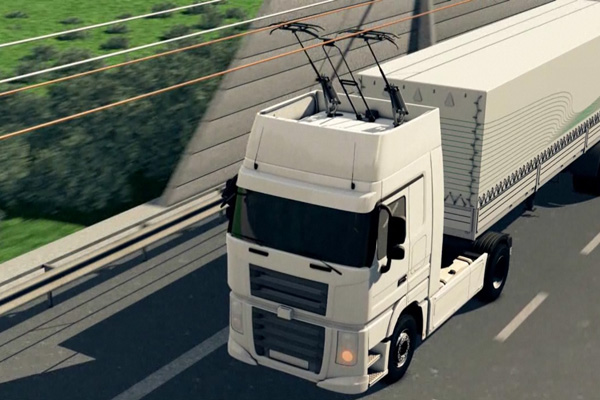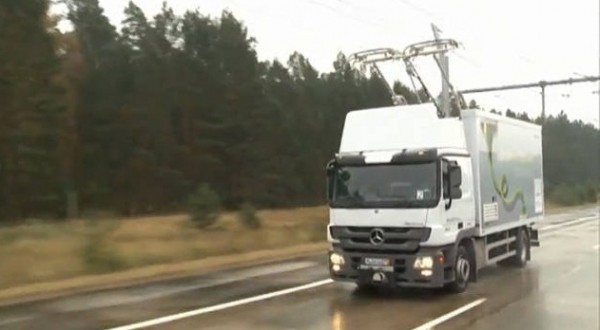It’s a simple concept that harks back to the golden age of city trolley cars, but electronics giant Siemens says its “eHighway of the future” could help make long-distance travel greener.
According to Siemens, freight transportation on U.S. highways is set to double by 2050. With this in mind, the company proposes fitting an overhead wire called a catenary to a dedicated highway lane.

Trucks could then hook up to the electrified wire via a rod, known as a pantograph, which can be raised or lowered to connect to the power supply.
Siemens envisages the system being used by trucks for long haul travel. The trucks would have to be hybrids, designed to use both electricity and diesel power and will automatically switch to electric mode when they detect and attach to the overhead lines. When the truck leaves the lines, it goes back to diesel.
The company already has a pilot project underway in Germany and, according to Siemens, based on results from that pilot the transition from electric power to diesel can be accomplished at speeds of up to 60 mph. The system also performs well in all weather conditions, according to the company.
Siemens is planning two further pilot projects for the U.S, at the ports of Los Angeles and Long Beach, to provide short distance connections to cargo centers.
According to Siemens, the big advantage of the eHighway is that it could be installed with only limited alterations to current roadways. With the modifications in place, the eHighway could cut fossil fuel use, substantially reduce CO2 emissions and reduce pollution in residential and agricultural areas.
“When most people think of vehicle emissions, they assume cars do most of the damage, but it’s actually commercial trucks that are largely to blame,” Daryl Dulaney, U.S CEO of Siemens Infrastructure and Cities, said in a statement. “Freight transportation on U.S. roadways is expected to double by 2050, while global oil resources continue to deplete. And by 2030, carbon dioxide emissions are forecasted to jump 30 percent due to freight transport alone.”
The overhead wire is fed from a container substation. The substation used at the German test site is equipped with a medium-voltage DC switching system, a power transformer and a rectifier 12-diode array.
The substation is also fitted with a controlled inverter, which allows for the feedback of the electric energy generated by the trucks’ regenerative braking. This two-way electrical transmission system, a step up from the one-way power supply used in conventional trolley lines, means that the overhead wire can also reclaim energy from the truck.

As well as installing the eHighway on conventional roadways, Siemens said the system could be used for transport between mines or pits, especially mines not linked up to the railway system, and for storage or trans-shipment facilities.
“It’s really about creating a more sustainable environment,” Dulaney added. “Already more and more consumers are driving electric and hybrid vehicles. If we can get the commercial freight industry to come on board, we’ll decrease emissions dramatically and improve sustainability.”